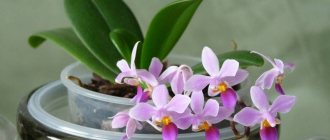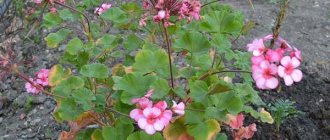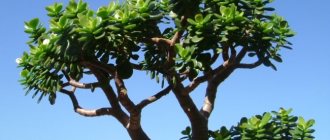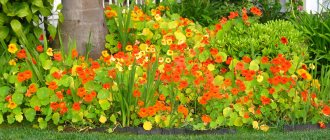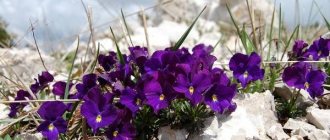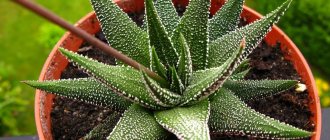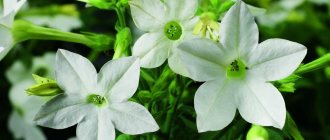Wild radish has been known since ancient times. But the attitude towards it in different cultures differed significantly. The upper class of ancient Egypt disdained it. It was believed that wild radish was a food suitable only for feeding slaves who built the pyramids. In ancient Greece, on the contrary, root vegetables were valued. Gold figurines depicting radishes were found. Root vegetables were used as a gift to the god Apollo.
Mainly, the distribution area of the plant is the European part of Russia, the Caucasus and Transbaikalia. You can find wild radish in the countries of Asia and North America; its distribution there is considered alien. It grows on roadsides, sparse forests, fields, and abandoned areas.
Wild radish is a well-known weed. Growing on agricultural lands, it significantly reduces productivity.
Radish Application
Collection and processing of medicinal raw materials
What family does the pea belong to: vegetable, fruit or legume, description of the plant?
Medicinal raw materials are root vegetables, especially black ones, and seeds. Root crops are dug up in the fall, shaken off the ground and dried a little in the air. Store in the basement in wooden boxes with dry sand all winter.
Application in official and folk medicine
Radish preparations stimulate appetite, stimulate the secretion of digestive juices, have a diuretic and choleretic effect, affect metabolism, are an expectorant, sedative and antimicrobial agent.
In medicine, radish is used for acute and chronic gastritis, especially when the secretory function of the gastrointestinal tract is reduced. Due to the large amount of fiber, root vegetables stimulate intestinal motility and increase the secretion of digestive juices. This allows them to be successfully used for chronic inflammation of the small and large intestines, chronic hepatitis and developing cirrhosis of the liver.
The combination of beneficial substances contained in radish helps reduce cholesterol levels in the blood, so root vegetables are an indispensable means for the prevention and treatment of atherosclerosis of the heart and brain vessels. When treating, it is recommended to combine radish juice with apple juice.
This root vegetable is also known as a good diuretic, especially for kidney and bladder stones. Its juice is used for acute and chronic diseases of the bronchi and inflammation of the nasopharynx. In this case, radish juice is mixed with honey or sugar in a ratio of 1:3. Locally, the juice is prescribed as a rub for rheumatism, radiculitis and neuralgia. To do this, three to four parts of radish juice are mixed with two parts of honey and one part of vodka. This rubbing can be used for a long time; Store it in the refrigerator in a well-closed porcelain or glass container.
Juice and grated radish or crushed seeds are used to treat purulent wounds, eczema and non-healing skin ulcers.
Radish juice with carrot and beet juice has long been considered a good remedy for treating anemia. To do this, raw root vegetables are grated on a fine grater, mixed in equal quantities, the juice is squeezed out through a canvas cloth, poured into a clay container and placed in a preheated stove or oven for 2-3 hours. Take 1 tablespoon 3 times a day 15-20 minutes before meals. The course of treatment is 2-3 months.
A little history
Radish has been known since time immemorial. Her images were even found on the Cheops pyramid. The ancient Egyptians grew and consumed radish as a natural cure for many diseases. Its pungent taste has been familiar to the Egyptians for at least 4 and a half thousand years. This is how old the famous pyramid is. Most likely, radish served as a good medicine for various diseases.
She was loved more than other vegetables in Ancient Greece
Preference was given to black radish even over carrots and beets, tasty and sweet root vegetables. Radish was worth its weight in gold for its beneficial properties. Even then, it began to be used not only as a supplement or main dish, but also as a medicine.
In all ancient treatises, radish was already mentioned as a remedy for various diseases. Ancient doctors advised using not only root vegetables, but also the oil obtained from the seeds.
In Rus', black radish has been known since time immemorial. She was fed and treated for various diseases. Along with other root vegetables, it was stored until spring and was an indispensable food on fasting days: “The radish came, and horseradish, and the book of Ephraim.” In this way, respect was shown for a vegetable that surpasses others in its benefits: “Radish often cures the plague.”
At that time, ordinary people did not have personal doctors or numerous pharmacies nearby, so much more attention was paid to prevention than to treatment. The special value of radish is that it can be used to prepare delicious savory dishes and at the same time be taken for medicinal purposes. One of them is okroshka, a traditional Russian dish.
Possible reasons for restricting access:
What family do potatoes belong to: description, video and photo
Access is limited by court decision or on other grounds established by the legislation of the Russian Federation.
A network address that allows you to identify a site on the Internet is included in the Unified Register of domain names, page indexes of Internet sites and network addresses that allow you to identify sites on the Internet containing information the distribution of which is prohibited in the Russian Federation.
A network address that allows you to identify a site on the Internet is included in the Register of domain names, indexes of pages of sites on the Internet and network addresses that allow you to identify sites on the Internet containing information distributed in violation of exclusive rights.
- 5
- 4
- 3
- 2
- 1
(0 votes, average: 0 out of 5)
Benefit
What type of fruit is potato?
Wild radish seeds and tubers have wide medicinal uses. This is explained by the high content of thioglycoside glucobrassicin and flavonoids in its tubers, as well as a large amount of fatty oil in its seeds. In addition, it contains many useful vitamins and microelements: iodine, iron, phosphorus and potassium. Radish has strong antibacterial and bactericidal properties, therefore it is widely used to treat various skin diseases. A decoction of its seeds helps with tumors and rheumatoid arthritis. To do this, you need to pour 1 teaspoon of seeds into 1 tbsp. water. The resulting mixture is boiled and left to infuse for about 2-3 hours. The strained tincture is taken three times a day, 1-2 tbsp. spoons both before and after meals.
The tubers of the weed plant perfectly restore the functioning of the gastrointestinal tract. Also, wild radish fruits are very useful for people suffering from urolithiasis. To prepare the medicine, you need to select a fairly large radish and make a small depression in it. Sugar or honey is added to it to stimulate the separation of bitter juice and soften its taste. The resulting juice should be taken once a day in the amount of 2-3 tbsp. spoons A similar medicine is used for respiratory diseases and to remove mucus from the lungs. When properly prepared, such a medicine can be more effective than various tinctures and sprays purchased at the pharmacy.
In addition to preparing various decoctions, wild radish leaves can be used for food by making a salad from them. For this you will need:
- 200 g radish leaves;
- 150 g green onions;
- 50 g parsley;
- 50 g dill.
For the sauce you will need:
- 2 eggs;
- 0.5 tbsp. low-fat sour cream;
- 1 tbsp. spoon of vegetable oil;
- 1 teaspoon apple cider vinegar;
- salt and sugar to taste.
All greens must be thoroughly washed and dried with a paper towel, and then finely chopped into a deep bowl. Egg yolks are beaten with sour cream and vinegar, after which butter, sugar and salt are added to the sauce. This salad is served in portions, spread out on large dried pieces of white bread.
At the same time, people suffering from gastritis and ulcers are strictly prohibited from eating wild radish.
Externally, wild radish is very similar to ordinary domestic radish, which can be found in almost every summer cottage, so it is easy to confuse them. However, during the flowering period, the weed becomes very toxic due to the accumulation of mustard oils in its inflorescences. Its stems and leaves are also saturated with poison, which can only be removed by drying them thoroughly. If you add such greens to a salad, you can easily get serious health problems.
And the root of a wild plant is poisonous throughout the life of the weed, so it cannot be consumed internally, regardless of the radish flowering.
The first signs of poisoning are changes in the color of urine from yellow to bright orange and severe nausea and even vomiting. Intoxication may cause dizziness and increased heart rate. If the necessary measures are not taken in a timely manner, dangerous changes in the kidneys and adrenal glands can occur. In case of poisoning, you should act according to a certain algorithm.
- First of all, it is necessary to perform a complete gastric lavage as early as possible. To do this, you can use either ordinary boiled water or a weak solution of potassium permanganate.
- The second thing to do is to perform an enema with plain water or the same solution of potassium permanganate. This is necessary to completely cleanse the intestines of toxic weed residues.
- For severe pain in the heart and obvious arrhythmia, you should take validol or nitroglycerin.
- To reduce side effects on the stomach, some time after cleaning it, it will be useful to drink 1-1.5 liters of thick jelly. It envelops the gastric walls and protects them from inflammation.
- A heating pad with cold water or a wet towel is placed on the stomach, after which an ambulance is called. Even if the pain and pain have already passed, and the nausea has subsided, it will be better if a specialist examines the victim.
Protection measures
- Destruction of seedlings at the white thread stage.
- Deep fall plowing.
- Timely cultivation.
- The use of the depletion method is the systematic cutting of the root system of emerging seedlings.
- Alternation of winter and row crops.
- Use of effective herbicides approved for use.
| Family | Brassicas – Brassicaceae Cruciferae – Cruciferae |
| Habitat | Prefers loose, less fertile, slightly acidic, low-carbonate soils. |
| Main period of germination | Spring; germination depth 1–2 cm. |
| Description | An annual spring weed, germinating from seeds, with a short taproot. |
| Typical signs | The flowers are light yellow, the wild radish petals are raised. (In field mustard they are omitted!). |
| Shoots | The cotyledon leaves are strong, wide, heart-shaped, the apex is strongly retracted, on long petioles. |
| Stem | Erect, branched, covered with protruding or adjacent hairs along the slope of the stem, up to 60 cm high. |
| Leaves | Lyre-shaped, pinnately divided, on both sides with ovoid, unevenly toothed lateral and very large apical lobes, increasing towards the top of the leaf; the upper leaves are lanceolate, unlobed. |
| Flowers | Pale yellow or white with purple or dark yellow veins, in few-flowered racemes; sepals are erect, adjacent to the petals. |
| Flowering period | Summer autumn. |
| Fetus | A pod consisting of 5–10 segments separated by interceptions; 80 mm long. The seeds are round (oval) yellowish/dark brown. |
| Reproduction | Seeds - about 150 (100–300) pieces/plant. |
| Viability of seeds in soil | More than 16 years. |
| Spreading | Widely distributed in many areas of our country. It mainly infests spring and row crops. |
| Meaning | A very harmful weed that branches strongly under favorable conditions. At first it grows quickly, overtaking the weeded crops. Significantly reduces yield and makes harvesting difficult (cleaning and drying costs). |
Botanical description
Wild radish is an annual plant from the cruciferous family; its Latin name is Raphanus raphanistrum. The plant is considered a weed and is widespread throughout our country, especially in the southern and eastern regions.
The weed grows in abandoned areas, roadsides, crop fields, pastures, pond banks, floodplains, and open forests in temperate, subtropical, semi-arid, and sometimes tropical regions.
Roots, leaves and flowers
An annual herbaceous plant with a vertically growing herbaceous stem usually reaches 40-60 cm in height. The root system is shallow and weakly branched. Wild radish produces a basal rosette of large, deeply lobed leaves during the early stages of growth. Its smaller and narrower upper leaves are alternately arranged on the stem and have fewer lobes than the lower leaves of the plant.
The annual may have white, pale yellow, lilac, pink or, rarely, purple flowers (18-40 mm across) that have four petals. Flowers are arranged in loose, elongated clusters at the tips of herbaceous branches. The annual blooms in early summer.
Wild radish stems are round or slightly lanceolate and range in color from bluish-green to purple. The stems may be unbranched or form several long branches near the base of the plant.
The leaves are green or bluish-green in color, covered with small, stiff hairs and slightly rough to the touch. The lower (rosette) leaves of the plant are large (from 15-30 cm in length and 5-10 cm in width), located higher along the stem, and have narrow and jagged edges. The higher the top of the plant, the smaller and sparser the leaves. Reproduction
- At the end of flowering, elongated seed pods form on the plant (3-9 cm in length and 3-6 mm in width). The testes are attached to the wild radish by stems 1-3 cm long and end in a tapering “beak” (1-3 cm long). The seed pod is divided into several segments. The testes resemble a pod in which the pea seeds are found. The seed pod is green or purple in color when immature and turns yellowish brown or grayish in color as it matures.
- When the seed pods are fully ripe, they easily split into 3-10 segments (3-7 mm long and 2-5 mm wide). Moreover, each segment contains one seed. The seeds are almost round in shape, their diameter is from 1.5 to 4 mm, and are red or yellowish-brown in color. During the season, from 150 to 300 seeds ripen on an annual plant. Seeds that fall to the ground germinate only a year later, after winter stratification under natural conditions.
- Wild radish reproduces only by seeds, which are spread some distance from the mother plant by wind, water, animals and humans. It is believed that the spread of the seeds of this weed over long distances occurs due to weed-contaminated grain (wheat, oats, rye).
Wild radish (Raphanus raphanistrum) is primarily a weed found in agricultural lands and near human habitation. The annual plant is called a good honey plant; the calyxes of the flower stalks contain enough nectar and pollinating insects are attracted by the sweet, far-reaching aroma. In agriculture, this weed is regularly controlled in cultivated fields, since vegetable crops or grains take longer to germinate than wild radish seeds. If measures are not taken in time and the unwanted inhabitant of the field is not destroyed, the weed will grow and will not allow bread or potatoes to grow. In private farms, gardeners destroy wild radishes using hand weeding; in large areas, their reproduction is kept under control using herbicide treatments.
How to get rid of weeds on the site
The most effective way is weeding. It is performed manually or using a hoe. But this method is only suitable for small summer cottages. No one weeds fields sown with wheat by hand.
To get rid of weeds, herbicides that are effective against dicotyledonous plants are used. If the field is not planted, then the ground can be treated with a universal weed killer.
Along roads and forest edges, wild radishes are not exterminated - the plant is an important honey plant.
Raphanus raphanistrum L
Systematic position.
Brassica family Brassicaceae Burnett (Cruciferae Juss.), genus Cabbage Raphanus L.
Biological group.
Morphology and biology.
Plant 20-60 cm tall, covered with stiff hairs. The stem is straight. The leaves are lyre-pinnately dissected, with 4-6 unequally toothed oblong-ovate lobes and a larger apical lobe. The inflorescence is a raceme. The flowers are actinomorphic, 4-membered, the petals are arranged crosswise, usually yellow, less often white or with a purple tint. The fruit is a pod, segmented, the lower part of the pod is clear-shaped, longitudinally grooved, the upper part is elongated into a long conical spout. The pod is woody, glabrous, straw-yellow; when ripe, it splits along transverse false partitions into separate segments. The seeds are oval-spherical, reddish-brown, their surface is reticulate, matte. Seeds enclosed in shells retain germination up to 18% when the segments pass through the digestive tract of animals. Blooms in May-September, bears fruit in July-October. Maximum fertility up to 2500 seeds. The minimum temperature for seed germination is 2-4°C. Seeds germinate from a depth of no more than 3-4 cm in the second year. The viability of seeds lasts up to 10 years or more. In the phases of germination and the beginning of fruiting, it can withstand frosts down to – 11° C, but does not overwinter.
Spreading.
Western Europe, with the exception of northern Scandinavia, Asia Minor, Syria, introduced into North America. Distributed throughout the European part of b. USSR, rarely in the Caucasus, Siberia and the Far East.
Ecology.
Prefers loose soils. It grows especially abundantly in wet years with cold spring. The fruits ripen before early grain crops are harvested; most of them fall off and clog the soil; some fall into the grain during harvesting. Distributed mainly with cereal seeds.
Economic importance.
It infests mainly spring crops in the Non-Chernozem zone b. USSR, occurs in the southern regions, but loses its significance as a weed. It is also found in fallows, like ruderals - along roads. Protective measures: early peeling and plowing in autumn, use of rotted manure. Cleaning seed material on triremes.
Literature:
Zotova A.P. Weeds and their control. Leningrad: Lenizdat, 1971. P. 60. Korsmo E. Weeds of modern agriculture. M.-L.: State. publishing house kolkh. and sovkh. Literary, 1933. pp. 115-116. Nikitin V.V. Weeds of the flora of the USSR. Leningrad: Nauka, 1983. 454 p. The main weeds and field plants of agricultural crops in the Leningrad region. VIR World Collection Catalog, vol. 468. Ed. Agaev M.G. Leningrad: VIR, 1988. pp. 44-46. Weeds of the USSR, vol. 3. Ed. Keller B.A. Leningrad: USSR Academy of Sciences, 1934. pp. 67-69. Ulyanova T.N. Weeds in the flora of Russia and other CIS countries. St. Petersburg: VIR, 1998. 344 p. Flora of the USSR, vol. 8. Ed. Komarov V.L., Bush N.A. M.-L.: USSR Academy of Sciences, 1939. P. 494-495.
detailed information
Application
Oil is extracted from the seeds of wild radish; it is also a honey plant.
Origin
Habitats
Wild radish is distributed mainly in the European part of Russia, in the non-black earth forest belt, in the Caucasus, Transbaikalia and even on the Amur. It is found in Asia Minor and North America as an alien.
Features of growth
Wild radish is a herbaceous plant, a species of the Radish genus of the Brassica family. In areas of its mass distribution, it infests all spring grain and other spring crops, drowning out crops, and also causes harm to cultivated plants in the sense that it extracts a large amount of nutrients from the soil. Its dry matter contains nitrogen up to 1.85%, phosphoric acid up to 0.78%, potassium up to 1.3%, calcium up to 1.81%. Wild radish grows in fallow areas, near roads and in weedy places. To combat wild radish, it is necessary to take into account that the segments of the clearly shaped radish pods are close in size to the grain of bread, and therefore are much more difficult to separate. They can be removed from the grain by immersing it in water and stirring at the same time, during which the lighter segments float to the surface of the water.
Other names
Bloom
Wild radish flowers are collected in clusters. Calyx with 4 upright sepals, corolla with 4 light yellow, white or pale purple petals, with dark veins. It has six stamens, and the ovary is short-stalked. The style is almost invisible with a capitate stigma. Blooms from May to autumn.
Fruit
The fruit of the wild radish is a clear-shaped pod that, when ripe, easily breaks into individual segments. The seeds are irregularly spherical, 3 mm long and 2.25 mm wide, reticulate-pitted, matte, reddish-brown, proteinless, with a folded radicular embryo. 1 kg contains 130,000 seeds. The fertility of one plant is up to 1000-12000 seeds. The seeds usually ripen by the time of harvesting or before harvesting spring grains, and when mowing the crops, the segments of the pods partly break off and fall on the spot, clogging the soil, and partly get into the crop and contaminate the grain. Seeds, cleared of segments, germinate quickly, but, enclosed in dense shells of segments, they usually germinate only in the second year. Frosts, followed by the influence of variable temperatures, especially at an interval of 12 ° C, promote germination. But even under this condition, the seeds germinate only when they are in the ground at a depth of 1-4 cm
Stem
Wild radish has a straight, branched stem with stiff hairs at the bottom, up to 50 cm high.
Beneficial features
The main reason for changes in health during this period is an acute lack of vitamins. This deficiency can be compensated for with the help of pharmaceutical vitamin complexes or obtained mineral nutrients from a weed plant - wild radish.
Useful substances found in this plant:
- minerals;
- essential oils;
- vitamins;
- potassium;
- phosphorus;
- iodine;
- iron;
- calcium;
- sodium salts
Its aerial parts (stems and leaves) contain vitamin C, and ripened seeds are a source of vegetable oils, the percentage of which in ripened wild radish seeds reaches 32%.
Beneficial features:
- antimicrobial;
- bactericidal;
- expectorant;
- antiscorbutic;
- antianemic;
- antibacterial.
The plant is a natural antibiotic; taking it in the right doses does not cause side effects or contraindications, which is the problem with many pharmacological drugs.
Did you know? The ancient Greeks considered the radish to be the king vegetable and cast it life-size in gold. It was an offering to the god Apollo at the annual Delphic celebrations.
The plant promotes:
- rapid metabolism (metabolism);
- increases the body's production of saliva and gastric juice several times;
- works as a diuretic, thereby eliminating swelling;
- improves the functioning of the gastrointestinal tract;
- removes toxins from the body, preventing them from entering the liver.
ethnoscience
This weed has long been used in folk medicine. On its basis, medicinal drugs are prepared, with the help of which many health problems are eliminated.
What diseases are treated in folk medicine with wild radish:
- poor vision;
- cough;
- anemia;
- colds;
- pain in muscles and joints;
- arthritis or radiculitis;
- malaria;
- scurvy and bleeding gums;
- sexual impotence in old age;
- poorly healing (inflamed, festering) wounds;
- cardiac arrhythmia;
- prevention of atherosclerosis;
- decreased lactation during breastfeeding.
Important! Self-medication with dangerous herbs is unacceptable! You should definitely seek advice from your local physician. Who should not use it: Who should not use:
Who should not use:
- patients with gastritis;
- people diagnosed with a stomach ulcer or duodenal ulcer.
Wild radish leaf salad recipe
Salad ingredients:
- wild radish leaves - 200 g;
- green onion feathers - 150 g;
- parsley leaves - one bunch;
- young dill greens - one bunch.
Ingredients for the sauce:
- eggs - 2 pcs.;
- sour cream - 0.5 cups;
- sugar - 1 tbsp. spoon;
- salt - 0.5 teaspoon;
- sunflower oil - 1 tbsp. spoon;
- vinegar - 1 tbsp. spoon.
Preparing the salad: all the greens are washed under running water and laid out on a cloth or towel to dry. Next, the greens are finely chopped, placed in a deep salad bowl and mixed thoroughly, after which the contents of the salad bowl are poured with whipped sauce.
Prepare the sauce: the raw yolks of two eggs are mixed with sour cream, sugar, sunflower oil, vinegar and salt are added.
Did you know? There are Asian varieties of radish: Chinese radish (lobo), its taste is similar to the taste of ordinary radishes, and Japanese radish (daikon) - this one differs from all varieties by the record length of its thick root. Japanese radish can reach a weight of three kilograms.
This weed plant is an excellent honey plant - a source of nectar and pollen for working bees. Beekeepers try to take the apiary to a summer camp near places where wild radish grows in abundance. Some enthusiasts even deliberately scatter pre-collected seeds of this plant in places of future honey collection.
Wild radish is a storehouse of minerals and vitamins; it can and should be eaten. But you should always remember the existing danger of poisoning people and animals by this plant.
What is the danger
Wild and cultivated radishes are very similar to each other, but the inflorescences of the wild relative are poisonous. When wild radishes bloom, they become very toxic. Only after the stems and leaves are thoroughly dried will they lose their poisonous qualities.
When the plant blooms, its above-ground parts (stems, leaves and flowers) produce mustard oils, which are a source of toxic substances. If during flowering wild mustard greens or flowers are added to any culinary dish, then eaters can get seriously poisoned.
Radish care: fertilizers, watering, weeding
The plant is quite unpretentious. Caring for radishes consists of watering, weeding, loosening and hilling. Once a week it is necessary to water the plantings abundantly. It is also necessary to thin out the plants. The first time this is done is when the first leaves appear. Then after 20 - 30 days. The distance that should be between plants depends on the variety. For early varieties - a distance of 6 - 8 cm. And for late varieties - a distance of 12 - 15 cm.
You can feed vegetables only with mineral fertilizers. Organic fertilizers have a bad effect on the quality of root crops and their keeping quality. Fertilizers can be applied in both dry and liquid form. However, dry fertilizers can only be applied when the soil is moist.
Usually two feedings are carried out. The first time when the first leaves appear. The second is 20 - 30 days after the first, when the root crop begins to ripen. 60 g of superphosphate, 20 g of urea and 16 g of potassium chloride are dissolved in one bucket. For 15 - 20 meters of one row, use one bucket of solution. When fertilizing in dry form, 20–15 g of superphosphate, 5–10 g of potassium chloride and 5–10 g of urea are added per 1 m2.
Plantings should be protected from cabbage leaf beetle, spring cabbage fly, flea beetle, cabbage moth, cabbage aphid, clubroot, cabbage mosaic, slugs, rapeseed flower beetle, and blackleg symptoms.
Basic landing rules
Wild radish grows in the form of a long, twisting, branched stem from 20 to 70 cm in height. The leaves are shaped like a lyre, covered with stiff hairs, and split at the bottom.
The flowers are formed into tassels. The ovary forms as inconspicuous columns; as it develops, it forms a fruit in the form of a pod. It has an oblong shape, divided into separate sections. Despite the unpretentiousness of the plant, you need to consider some points:
- The only restrictions on previous crops when planting are plants of the same Cruciferous family: radishes, cabbage, daikon and other representatives of the species. This is due to the possible presence of pests at the planting site that affect members of the family. If they are still detected, you need to use the preparations Iskra golden or Confidor, which are very effective in the fight against cross-shaped flea.
- The time for planting seeds depends on the gardener’s future plans for this crop. The fact is that field radish consistently produces two harvests per season. The peculiarity of the first harvest is that, despite all the remaining positive properties of the root crop, it does not have a shelf life and is unsuitable for harvesting for the winter. This quality is inherent in the autumn harvest. Thus, the date for the second planting falls in the first ten days of June, and for the southern regions it is the end of the month.
- The culture is not demanding on soil composition. But, if you want to get a decent harvest, you need to add humus that has been aged for 2-3 years. Knowing the adherence of root crops to loose soil, it should be diluted by 20-25% with wood ash.
Wild radish morphological description - Summer resident's guide
Veronica spicata (spikelet): description, planting, care, use in folk medicine
Wild radish is a herbaceous, poisonous annual plant that colonizes fields as a weed.
It is unpretentious to climate and soil, distributed over almost all continents, most often found in the forest zone of Europe, as well as in meadows, along roads, wastelands and even on city lawns.
It germinates, as a rule, in spring and summer, but it also happens in autumn, at an air temperature of +2-4 degrees C.
Field plant - wild radish
The Cruciferous family are plants that are pollinated by insects. Therefore, many of them smell and have nectar. Our herbaceous plant belongs to this family.
It has a fairly high, splayed, straight stem (reaches 50-60 cm in height), covered with stiff hairs. The leaf is lyre-shaped and grows alternately. The root system is in the form of a shortened root.
The color of the flowers is white, yellowish, rarely purple-white. The weed's petals grow crosswise and consist of one pistil and six stamens. The length of the fruit, which ripens in the fall in the form of a pod divided into 5-10 segments, can reach 8 cm.
The seeds are in oval-shaped pods of a reddish hue.
Scientists have proven that in soil a seed can maintain its viability for up to 10 years. Wild radish blooms in May-September and bears fruit in July-October. In the phases of germination and the beginning of fruiting, it can withstand frosts down to –119deg;C, but does not overwinter.
The plant does a lot of damage in fertile fields; it spreads well throughout the beds, preventing vegetable crops from germinating.
Wild radish is endowed with poisonous properties when in bloom, and only loses them when dried.
In some countries, for example in England, the stems of this plant are used for food in the form of salads, soups and even seasonings, but after treatment with heat they are not suitable for this, as they have a bitter taste. When dried, they are used to make seasonings.
Closer to autumn, when the pods ripen, the weed becomes dangerous for animals: by secreting mustard oil, it can lead to acute damage to the gastrointestinal tract. The plant looks similar to field mustard. Poisoning of rabbits is possible after feeding grass from the fields.
However, radish has excellent honey-bearing properties - it provides a large amount of nectar and pollen for bees. In folk medicine, a decoction of it was used as an expectorant. Beneficial properties include the content of vitamin C in the aerial part of the weed, and in the seeds - 20-32% fatty oil.
Finally, we will share with you an interesting and simple dish that can be prepared from this plant.
Wild radish salad recipe
Wash the leaves (200 g), cut them, put them in a deep plate. Grind the yolks (2 eggs) with sour cream (1/2 cup), sugar (1 tablespoon), vinegar (1 tablespoon), sunflower oil (1 tablespoon) and salt. Beat the whole mixture and pour it over the leaves, sprinkle chopped parsley, dill and onion on top.
Conclusion
Now you know what wild radish looks like - you can see a photo of it in our article. You know how and where it grows and what the properties of this plant are.
Our ancestors slept differently than we do. What are we doing wrong? It’s hard to believe, but scientists and many historians are inclined to believe that modern man sleeps completely differently than his ancient ancestors. Initially.
20 photos of cats taken at the right moment Cats are amazing creatures, and perhaps everyone knows this. They are also incredibly photogenic and always know how to be in the right place at the right time.
Top 10 Broke Stars It turns out that sometimes even the biggest fame ends in failure, as is the case with these celebrities.
7 Body Parts You Shouldn't Touch with Your Hands Think of your body as a temple: you can use it, but there are some sacred places that you shouldn't touch with your hands. Research showing.
Contrary to all stereotypes: a girl with a rare genetic disorder conquers the fashion world. This girl's name is Melanie Gaydos, and she burst into the fashion world quickly, shocking, inspiring and destroying stupid stereotypes.
Literature
- Flora of the USSR. In 30 t / Ch. ed. acad. V. L. Komarov; Ed. volumes N.A. Bush. - M.-L.: Publishing House of the USSR Academy of Sciences, 1939. - T. VIII. - pp. 494-495. — 696 + XXX p. — 5200 copies.
- Alekseev Yu. E. et al.
Field or wild radish - R. raphanistrum // Herbaceous plants of the USSR. B 2 t / Rep. ed. Doctor of Biology Sciences Rabotnov T. A. - M.: Mysl, 1971. - T. 1. - P. 429. - 487 p. — 60,000 copies. - Gubanov I.A. et al.
683.
Raphanus raphanistrum
L. - Wild radish // Illustrated guide to plants of Central Russia. In 3 volumes - M.: Scientific T. ed. KMK, Institute of Technology. research, 2003. - T. 2. Angiosperms (dicotyledonous: separate-petalled). - P. 309. - ISBN 9-87317-128-9
It produces nectar and pollen, so the flowers are readily visited by honey bees [3].
Taxonomy
Species Radish
belongs to the genus Radish (
Raphanus
) of the Brassicaceae family
of
the Brassicales
order .
| 14 more families (according to the APG II System) | from 2 to 9 more types | ||
| order Brassicas | genus Radish | ||
| Department Flowering, or Angiosperms | Brassica family | Field radish | |
| 44 more orders of flowering plants (according to the APG II System) | about 330 more births | ||
